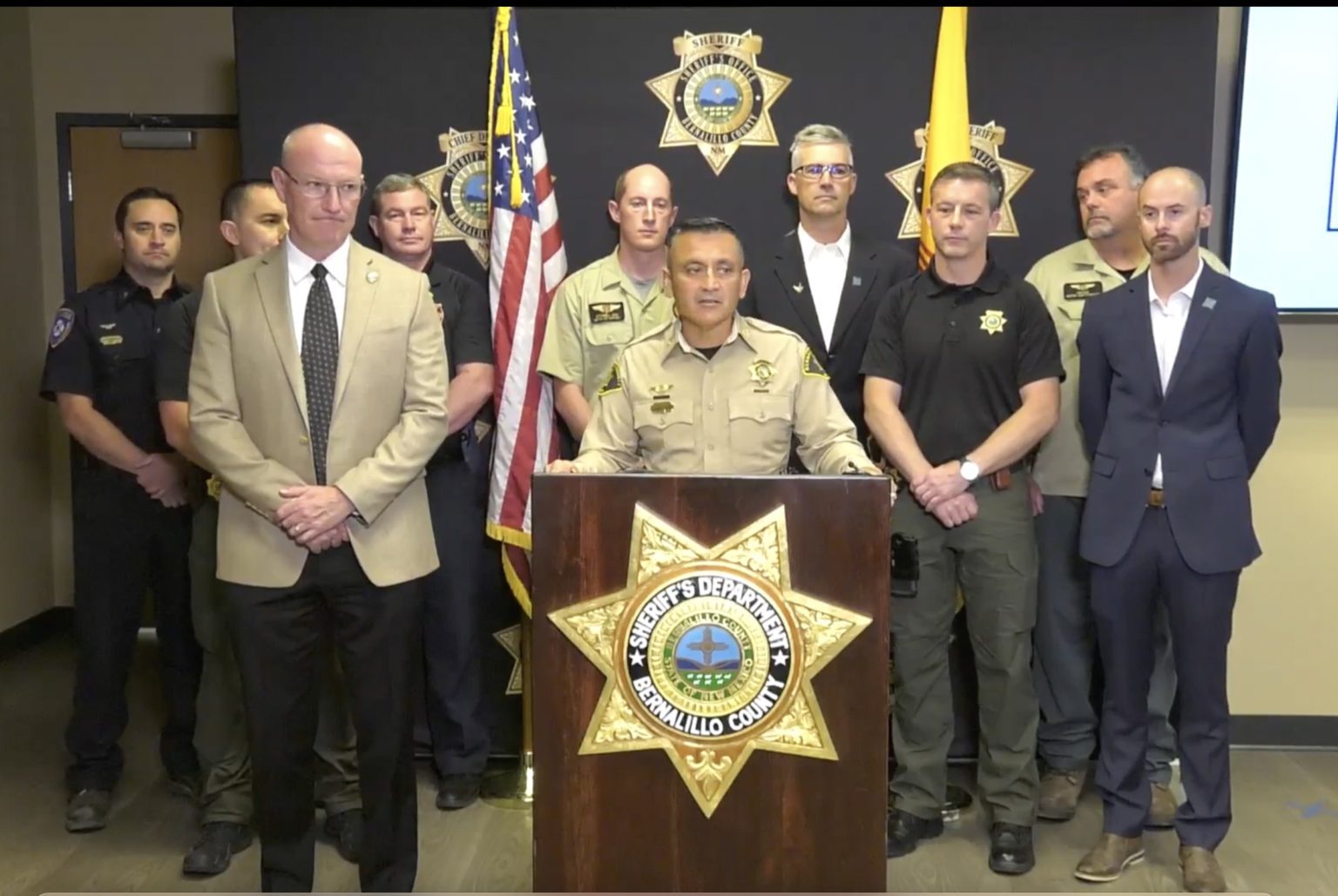Members of the Bernalillo County Sheriff’s Office will be visiting California to learn from the successes of the San Diego Sheriff’s Department, as well as taking inventory of new equipment to include a replacement for the Metro 2 helicopter that crashed July 16.
Bernalillo County Sheriff Manuel Gonzales III provided details of the upcoming trip during a Sept. 7 press conference where he updated the public about the county’s Metro Air Support Unit and its next steps forward. When asked how much a new helicopter and all the equipment that goes with it will cost, Gonzales said, “It varies. I wish I could say it was 1999, right? But it’s going to vary anywhere from maybe $8 to $15 million, and that’s just a ballpark.”
Gonzales said one of the reasons for the trip to San Diego is to see what type of assets they have and how those assets could compliment what is needed in Bernalillo County. He said San Diego’s sheriff’s department resembles Bernalillo’s in many ways and can provide valuable tools and information to serve the county and all of New Mexico.
When asked if there are other programs BCSO is looking at or if San Diego’s stuck out because of the adversity its faced, Gonzales said, “It was kind of twofold. It was the resemblance in our program and the adversity. And we felt like adversity adds a lot to some of the things we’re facing and then also to figure how they moved forward and became so successful.”
The adversity San Diego’s sheriff’s department faces includes overcoming losses from large fires. “What I believe is most interesting about their situation is that they’ve had adversity at the Sheriff’s Office in San Diego,” Gonzales said. “And almost 20 years ago there was a Cedar Oak Fire [in] which over 5,000 homes were destroyed and many lives, casualties, were lost, to include one firefighter. And we believe because of that incident they became better through that loss.
“Through adversity they were able to take the opportunity and figure out how they could become more proactive and more useful to keeping the people safe in California,” Gonzales continued. “That was arguably the most catastrophic fire in the history of California with over a billion dollars of loss to that state and to that community. Also, the benefits of having a program like that is people are cultivated internally, so there is a better chance for sustainability and continuity and in a tragedy you’re able to continue service. I also believe that it’s a good way to recruit and retain people internally to your agency. So that’s another reason we’re going down there.”
Bernalillo County’s Metro 2 helicopter crashed near Las Vegas, New Mexico, when its crew was assisting with a wildfire in the area. Three BCSO officers and one Bernalillo County Fire Rescue member perished in the crash. Gonzales said BCSO regularly helps firefighters on the ground in addition to the law enforcement operations they carry out.
Bernalillo County Commissioner Walt Benson, whose district includes Sandia Heights, North Albuquerque Acres, Paradise Hills, Ventana Ranch and portions of the North Valley, was also present at the press conference. “One of my promises to my constituents was that along with working to create jobs, I was going to commit to working to keep our community safe,” Benson said. “The Sheriff’s Department is essential in that, and it’s not just the ground support but also the air support.”
Benson said BCSO’s air support is versatile and integral to combating street racing and carrying out search and rescue operations, among other duties. He said he will continue to support the sheriff’s office in its efforts to keep the community safe. “In the wake of this horrible tragedy that we just saw, I’m committed to keep supporting this MASU program and doing what we can to not take our foot off the gas in terms of supporting our community and keeping the public safe.”
Gonzales said he hopes to have a better idea of what assets the air support unit will need to move forward and how much those will cost after returning from California. He said it will take many years to train new pilots to the point they have anywhere close to the same skills and experience the late pilot and Undersheriff Larry Koren had. “It’s not something that happens over the night,” Gonzales said. “Some of these things take years to develop a pilot, but we’re going to have to be patient. Unfortunately, I’m only here to the end of the year. I have a lot of patience, but these things will take anywhere from five, 10, 15 years.
“What I would hope with the vision, and the plan, and the, I’m just going to say the fortitude of this unit, that these things will happen over the years to come. So it’s something you’re not going to see immediately.”


